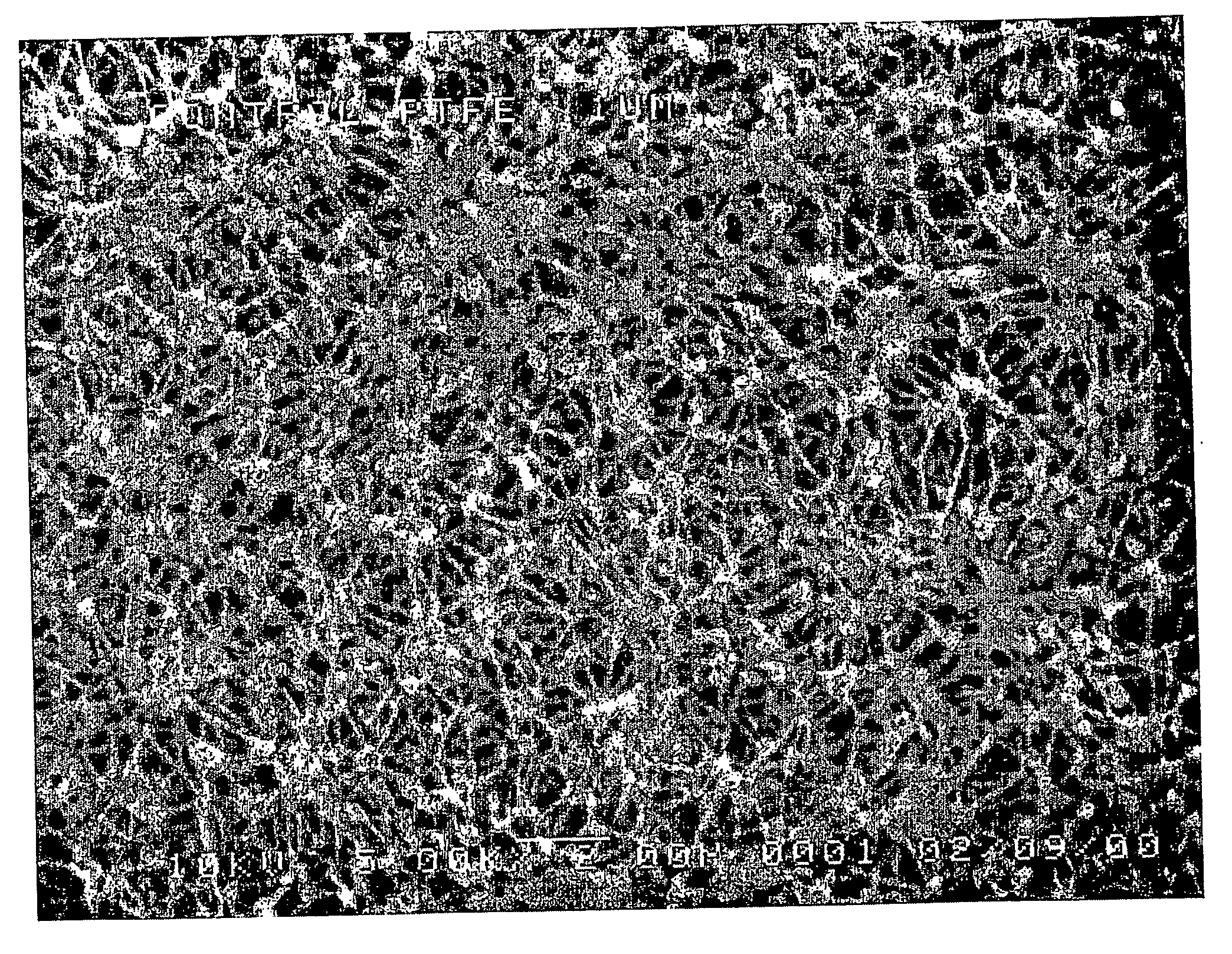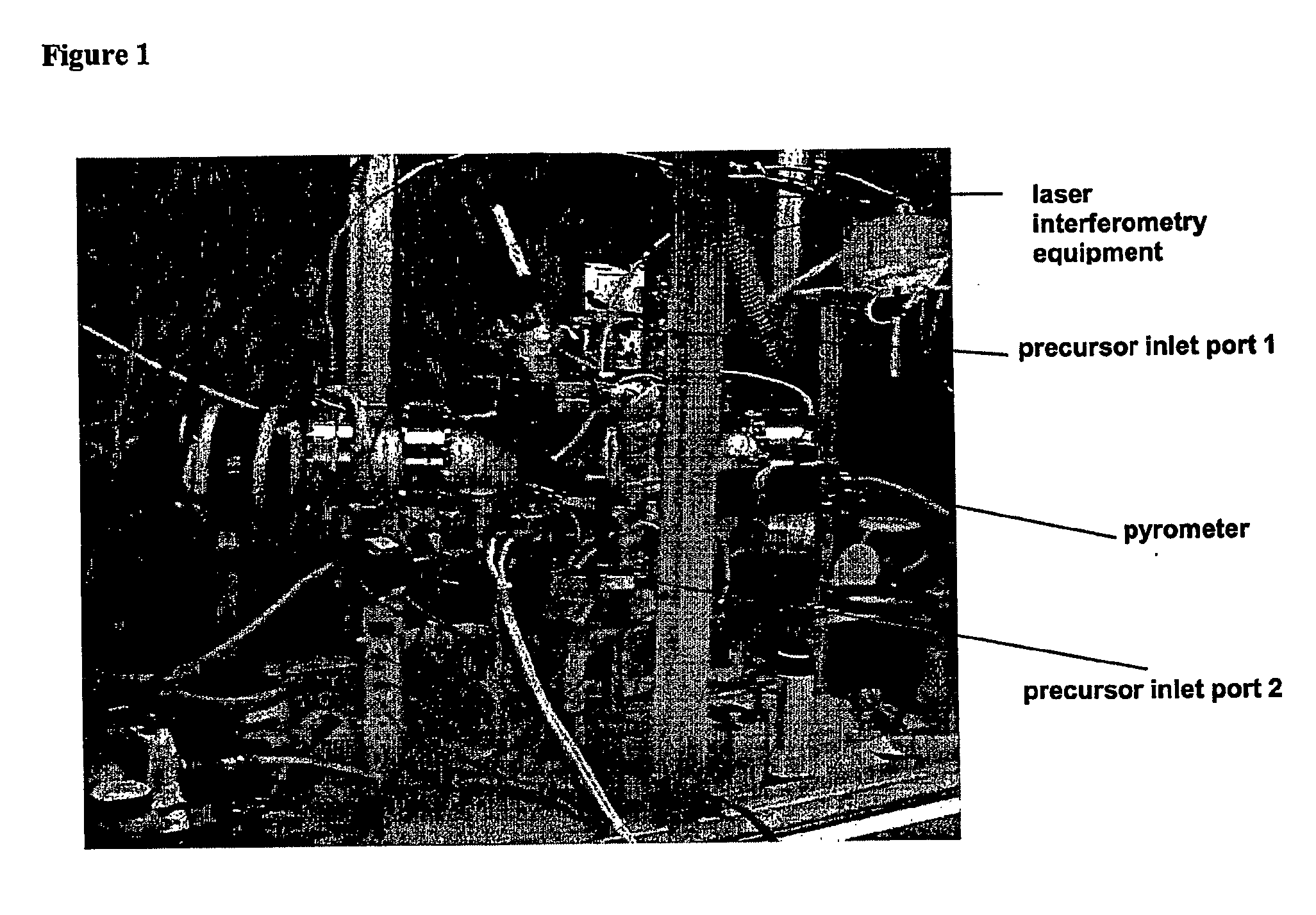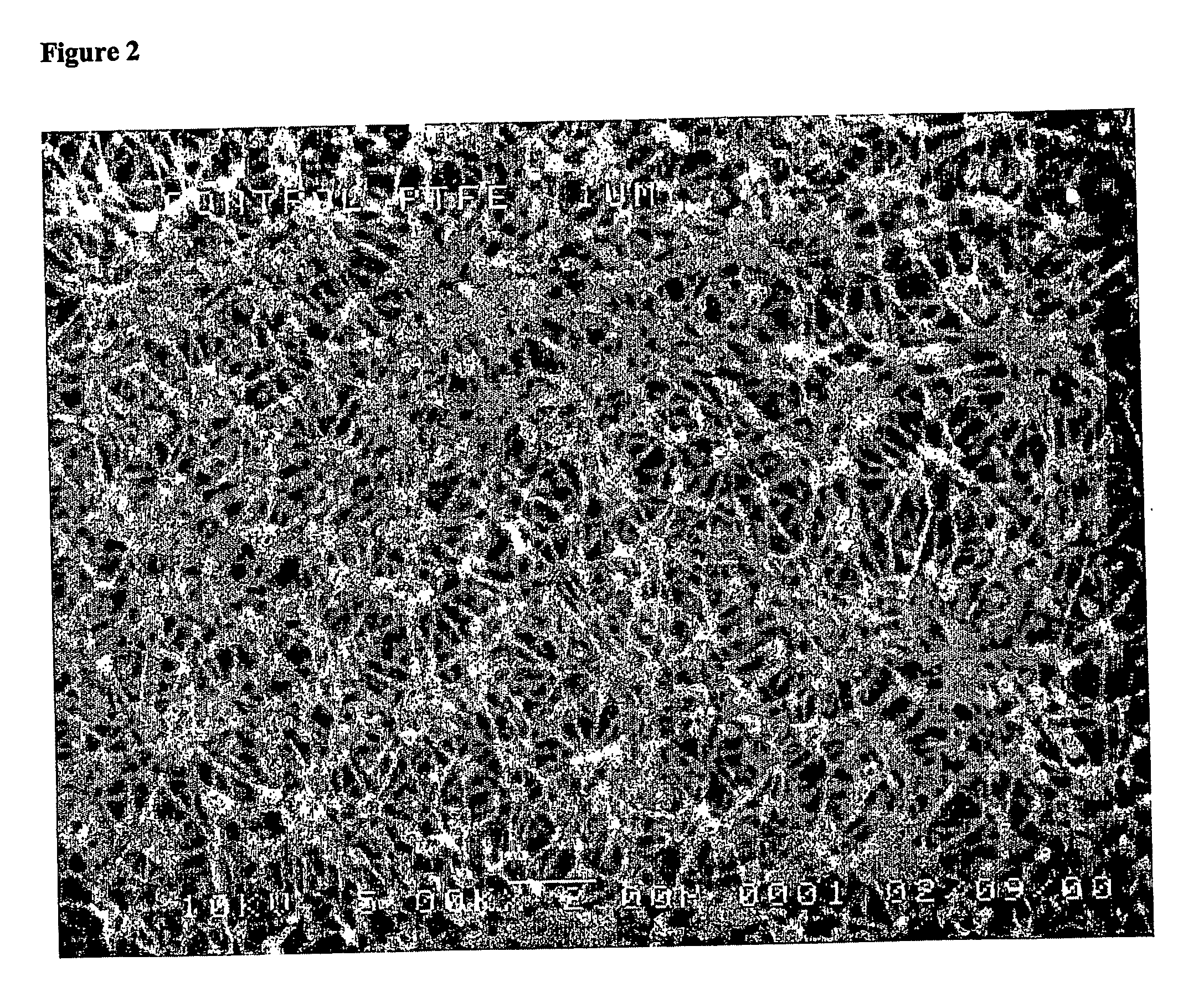Preparation of asymmetric membranes using hot-filament chemical vapor deposition
a technology of chemical vapor deposition and asymmetric membrane, which is applied in the direction of membranes, separation processes, coatings, etc., can solve the problems of undesirable reduction of one of these characteristics, liquids being filtered in this fashion experience pressure drop across the membrane filter, outgassing of liquid, etc., and achieve the effect of reducing pressure drop and less energy
- Summary
- Abstract
- Description
- Claims
- Application Information
AI Technical Summary
Benefits of technology
Problems solved by technology
Method used
Image
Examples
Embodiment Construction
[0032] Bulk poly(tetrafluoroethylene), also known as PTFE, (CF2)n, and Teflon®, is characterized by superior mechanical and electrical properties that are important for a wide range of applications. For example, bulk PTFE is characterized by a low dielectric constant of about 2.1 and a low dielectric loss factor of less than about 0.0003 between about 60 Hz and 30,000 MHz. Bulk PTFE is also characterized by high chemical stability, exemplified by its immunity to even strong alkalis and boiling hydrofluoric acid; low water absorption, exemplified by its water uptake of only about 0.005 weight % in a 24 hour period; and high thermal stability, exemplified by its weight loss of only about 0.05 weight % per hour at about 400° C. A low coefficient of friction of between about 0.05 and about 0.08, and a low permeability constant also characterize bulk PTFE.
[0033] There have been proposed various film deposition processes devised with the aim of producing thin films having properties simi...
PUM
| Property | Measurement | Unit |
|---|---|---|
| temperature | aaaaa | aaaaa |
| temperature | aaaaa | aaaaa |
| porosity | aaaaa | aaaaa |
Abstract
Description
Claims
Application Information
 Login to View More
Login to View More - R&D
- Intellectual Property
- Life Sciences
- Materials
- Tech Scout
- Unparalleled Data Quality
- Higher Quality Content
- 60% Fewer Hallucinations
Browse by: Latest US Patents, China's latest patents, Technical Efficacy Thesaurus, Application Domain, Technology Topic, Popular Technical Reports.
© 2025 PatSnap. All rights reserved.Legal|Privacy policy|Modern Slavery Act Transparency Statement|Sitemap|About US| Contact US: help@patsnap.com



